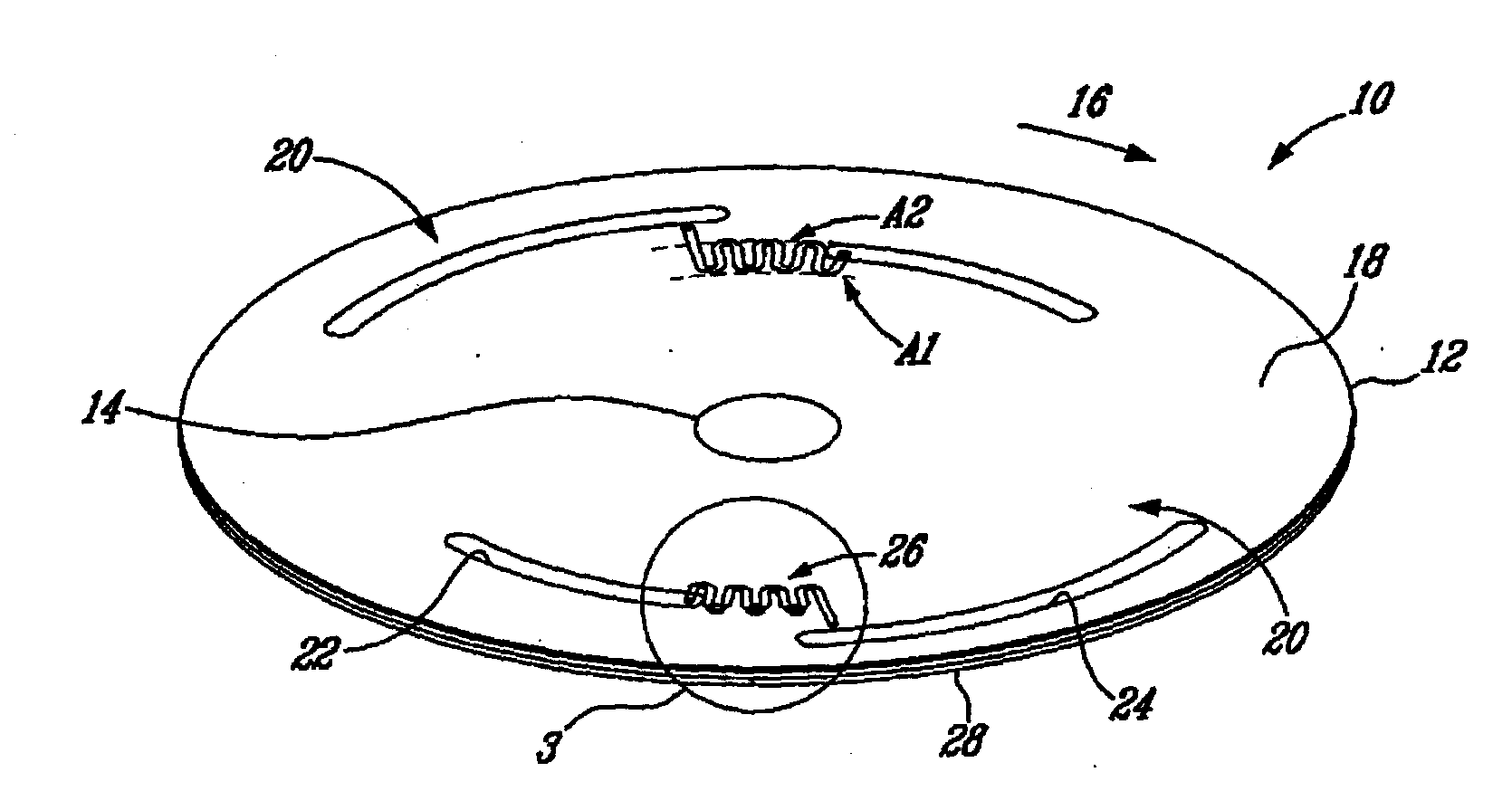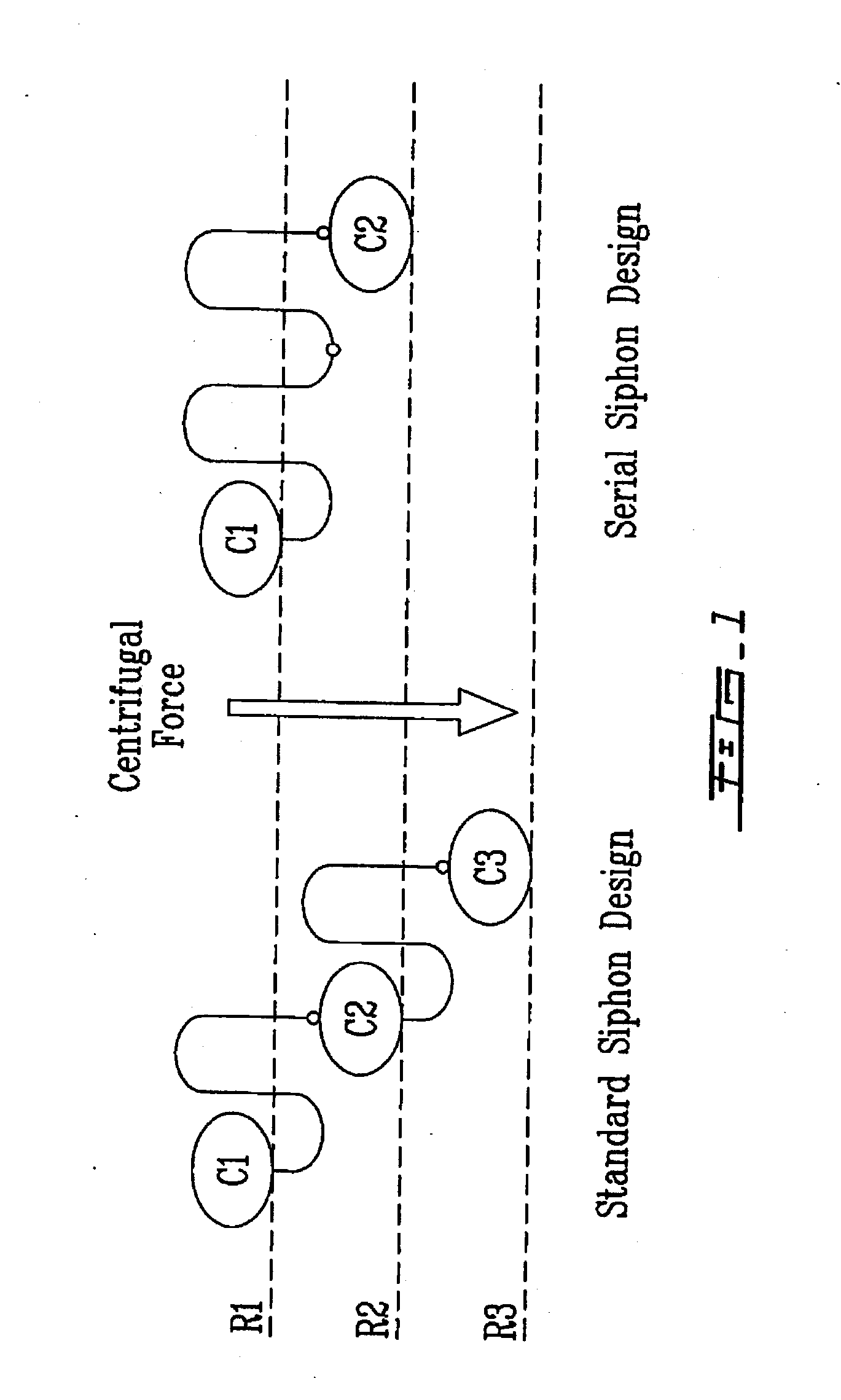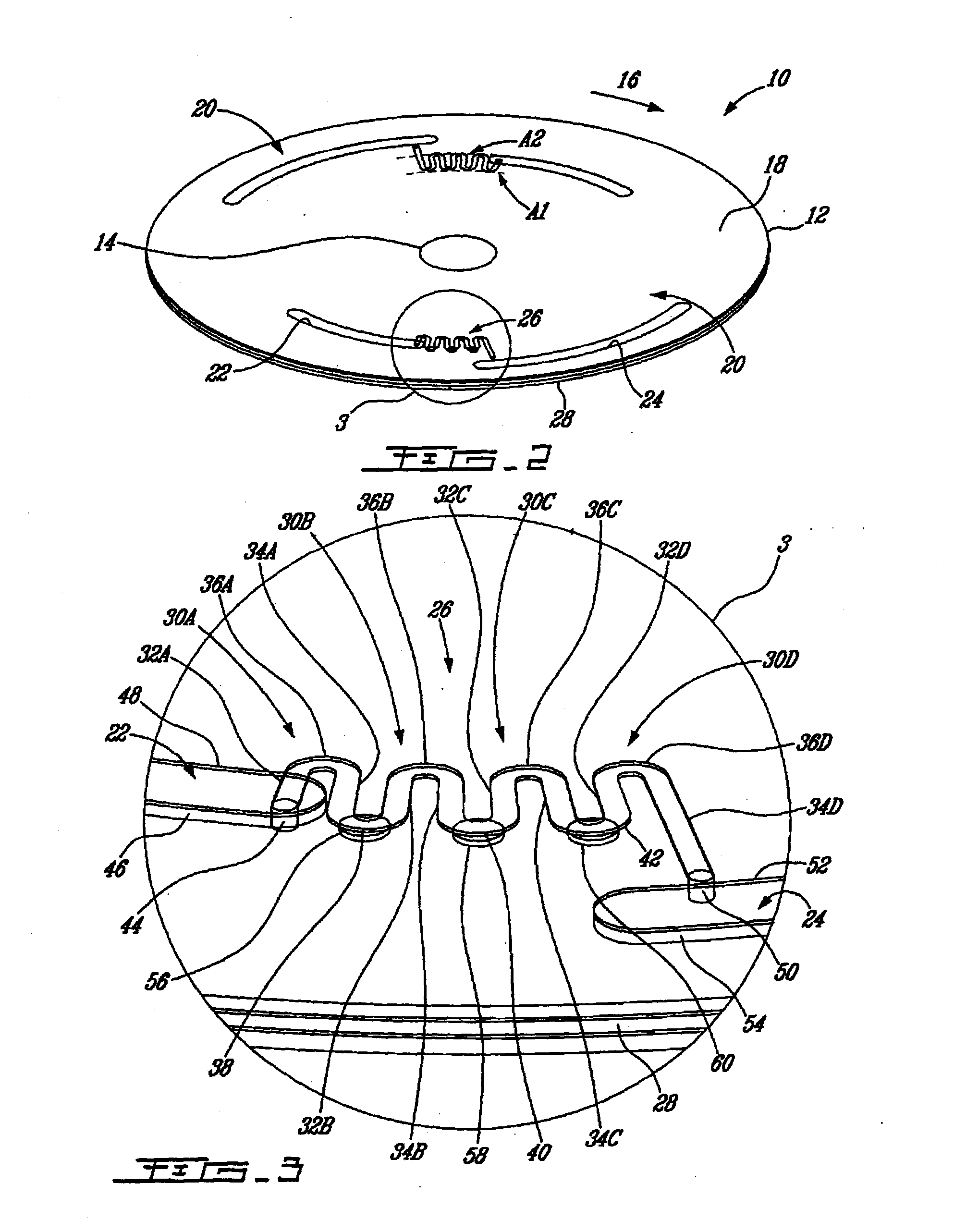Serial siphon valves for fluidic or microfluidic devices
a fluidic or microfluidic device technology, applied in the field of fluidic devices, can solve the problems of complex transducer systems, less reliable burst valves, and limited practical applications, and achieve the effect of saving radial space and more features
- Summary
- Abstract
- Description
- Claims
- Application Information
AI Technical Summary
Benefits of technology
Problems solved by technology
Method used
Image
Examples
example 1
[0070]A serial arrangement of siphon valves in a centripetal fluidic platform for controlling the release of fluid.
[0071]FIGS. 7A to 7J illustrate the present invention in action. A non-limiting example of a corresponding spin profile is also shown in FIG. 8. More specifically, FIG. 8 illustrates the spin profile used to control the release of liquid L from an upstream chamber 22 into a downstream chamber 24 by the use of serial siphon microfluidic structures such as the serial siphon valve conduit 26.
[0072]Rotation at 1,500 RPM generates centrifugal acceleration that enables the liquid front to travel beyond the capillary valves. After about 24 seconds (see FIGS. 7J and 8), most of the liquid L from the upstream chamber 22 can be transferred to the downstream chamber 24. In this example a total of five cycles of rotation and stopping are demonstrated. The number of cycles that may be incorporated into this system would be limited by the liquid front's (F1, F2, F3, F4, F5, F6, F7, F...
PUM
 Login to View More
Login to View More Abstract
Description
Claims
Application Information
 Login to View More
Login to View More - R&D
- Intellectual Property
- Life Sciences
- Materials
- Tech Scout
- Unparalleled Data Quality
- Higher Quality Content
- 60% Fewer Hallucinations
Browse by: Latest US Patents, China's latest patents, Technical Efficacy Thesaurus, Application Domain, Technology Topic, Popular Technical Reports.
© 2025 PatSnap. All rights reserved.Legal|Privacy policy|Modern Slavery Act Transparency Statement|Sitemap|About US| Contact US: help@patsnap.com



